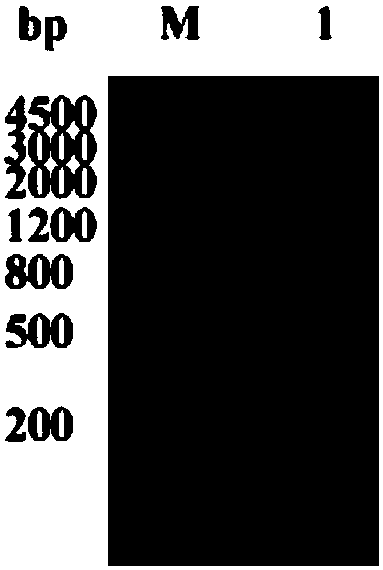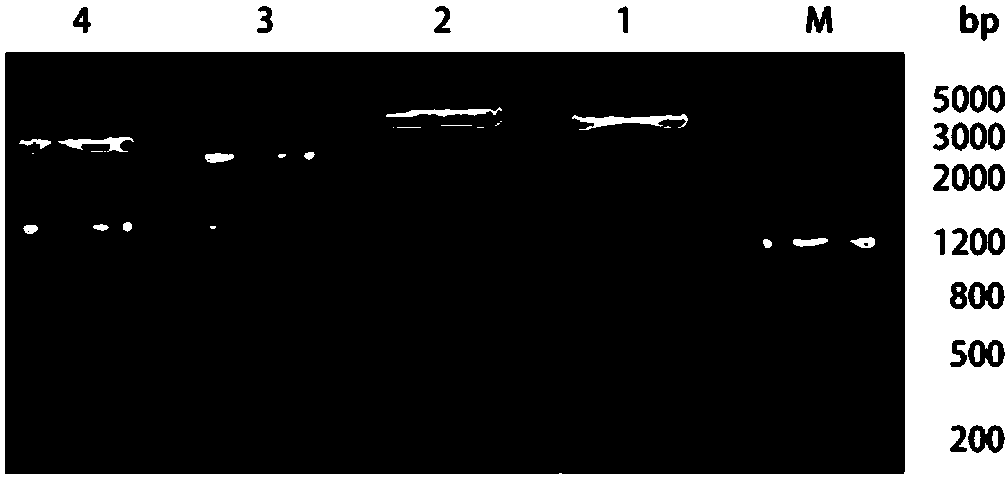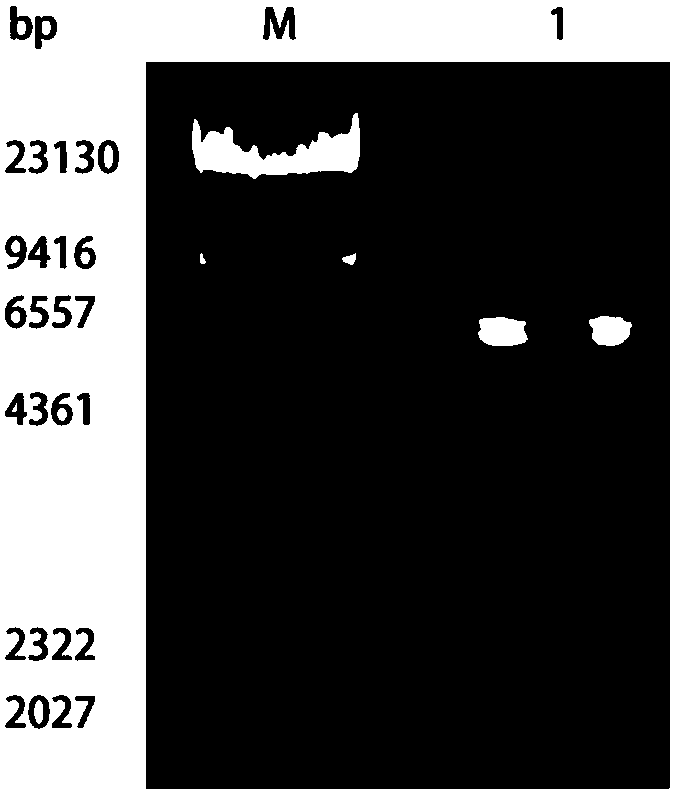Constitutive-inductive type yeast engineering bacteria and construction method thereof
A yeast engineering and construction method technology, applied in the field of genetic engineering, can solve the problems of underutilization of molecular directional breeding technology, backward fermentation level, late start of research and development of mesothermal α-amylase, etc., so as to improve fermentation activity and improve expression level. , the effect of large application advantages
- Summary
- Abstract
- Description
- Claims
- Application Information
AI Technical Summary
Problems solved by technology
Method used
Image
Examples
Embodiment 1
[0045] Embodiment 1, the acquisition of β-mannanase and its coding gene
[0046] The β-mannanase in the present invention is a modified sequence of β-mannanase derived from the fungus Aspergillus sp.T16. For the amino acid sequence of the enzyme and its corresponding coding gene sequence, refer to Chinese invention patent CN201310190483.1.
[0047] The coding gene sequence corresponding to the β-mannanase in the present invention is shown as SEQ ID No.1. The abbreviations of various amino acids and bases in the sequence of the present invention are shown in Table 1. The amino acids at positions 34, 55 and 129 in the amino acid sequence of β-mannanase are aliphatic amino acids, that is, at positions 34, 55 and 129. Xaa can be A, G, I, L or V; amino acids at positions 101, 170 and 204 are charged amino acids, that is, Xaa at positions 101, 170 and 204 can be D, E, R, K or H; Amino acids at positions 54, 56, 112 and 306 are aromatic amino acids, that is, Xaa at positions 54, 56,...
Embodiment 2
[0050] Embodiment 2, construction of constitutive or inducible yeast genetically engineered bacteria expressing β-mannanase
[0051] Using the β-mannanase gene man modified in Chinese invention patent CN201310190483.1 as a template, and ManF-5CCGCTCGAGAAAAGAGAGGCTGAAGCTTCCTTCGCCAGCACCTCCGG3 and ManR-5GCTCTAGATCAAGCACTACCAATAGCAGCAACATG3 as primers, PCR amplification was performed. The PCR amplification parameters were: denaturation at 95°C for 5 minutes; 94 Denaturation at ℃ for 1min, annealing at 52℃ for 1min, extension at 72℃ for 2min, 30 cycles; full extension at 72℃ for 15min. The pGAPZαA and pPICZZαA plasmids were double-digested with Xho I and Xba I, and the above PCR product was double-digested at the same time, and the double-digested PCR product was ligated with the purified product of the double-digested plasmid with T4 ligase. The ligation product was transferred into E.coli DH5α by the heat shock method, and positive clones were picked for PCR identification and se...
Embodiment 3
[0054] Example 3, Construction of constitutive and inducible yeast genetically engineered bacteria co-expressing β-mannanase
[0055] 1. Construction of β-mannanase constitutive and inducible co-expression vectors
[0056] Extract the correctly constructed constitutive plasmid pGAPZα-man and the inducible plasmid pPICZα-man in Example 2, linearize pGAPZα-man with restriction endonuclease BamHI and endonuclease NcoI, BglП and endonuclease NcoI linearize pPICZα- man( figure 2 ); the fragment containing the β-mannanase gene in the above linearized product was recovered by agarose gel electrophoresis, and the above two fragments were connected with T4 ligase, named pGAPZα-man-pPICZα-man; the ligated product Transform Escherichia coli by the heat shock method, and pick positive clones for PCR identification and sequencing.
[0057] 2. Construction of β-mannanase constitutive and inducible co-expression yeast genetically engineered bacteria
[0058] The above-mentioned plasmid p...
PUM
 Login to View More
Login to View More Abstract
Description
Claims
Application Information
 Login to View More
Login to View More - R&D
- Intellectual Property
- Life Sciences
- Materials
- Tech Scout
- Unparalleled Data Quality
- Higher Quality Content
- 60% Fewer Hallucinations
Browse by: Latest US Patents, China's latest patents, Technical Efficacy Thesaurus, Application Domain, Technology Topic, Popular Technical Reports.
© 2025 PatSnap. All rights reserved.Legal|Privacy policy|Modern Slavery Act Transparency Statement|Sitemap|About US| Contact US: help@patsnap.com



